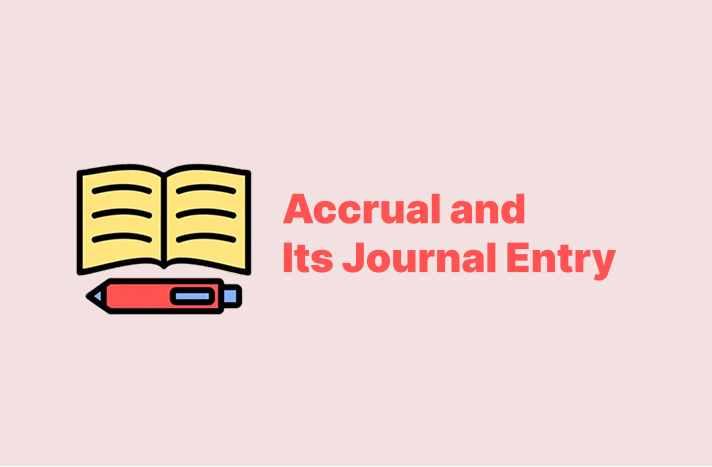Reversing journal entry is needed for several reasons, such as fixing mistakes, handling accrued expenses, or reversing temporary adjustments. It helps accountants maintain clean and accurate records.
In this article, you’ll learn how reversing journal entry works. We’ll provide examples and you will learn when do you use it.
Let’s get started with the main definition.
What is a Reversing Journal Entry?
A reversing journal entry is an accounting entry made to cancel or reverse a previous journal entry. It is used to correct errors or simplify the accounting process. That happens when it deals with accrued expenses or temporary adjustments.
Reversing entries are made at the beginning of a new accounting period to avoid duplicating transactions.
For example, if a company recorded an accrual for an expense at the end of one period, a reversing entry is made at the start of the next period. This helps ensure that the expense is only recorded once when the actual payment is made.
They make it easier to manage accounts and maintain accurate financial records.
They are used for several key reasons:
- Cancel incorrect transactions
- Prevents duplicate entries and ensures that the expenses or revenues are recorded only once when the actual transactions occur.
- They help make temporary adjustments that were made for estimating expenses or revenues at the end of a period.
Let’s move on to the following section to understand how they work.
How Reversing Journal Entries Work
It cancels or “reverses” the previously recorded journal entry. Here is how they work:
- Initial entry: The accrual or adjustment is made in the accounting system at the end of a period.
- Reversal at the start of the new period: The reversing entry is recorded at the beginning of the next accounting period. This entry is the opposite of the original entry.
- Avoiding double-counting: The expense or revenue is recorded as usual when the actual transaction happens. The reversing entry ensures that the transaction is only recorded once and avoids duplication.
- Timing: reversing entries are made on the first day of a new accounting period. This keeps accounting records clean and ensures that only actual transactions are reflected in the financial statements.
Let’s see an example in the following section.
Reversing Journal Entry Example
1- Original Entry (Accrual for January)
Expense Account:
| Date | Description | Debit | Credit | Balance |
|---|---|---|---|---|
| Jan 31 | Accrued Expense | 500 | 500 |
Accrued Liabilities Account:
| Date | Description | Debit | Credit | Balance |
|---|---|---|---|---|
| Jan 31 | Expense | 500 | 500 |
2. Reversing Entry (February 1st)
Expense Account:
| Date | Description | Debit | Credit | Balance |
|---|---|---|---|---|
| Jan 31 | Accrued Expense | 500 | 500 | |
| Feb 1 | Reversing Entry | 500 | 0 |
Accrued Liabilities Account:
| Date | Description | Debit | Credit | Balance |
|---|---|---|---|---|
| Jan 31 | Expense | 500 | 500 | |
| Feb 1 | Reversing Entry | 500 | 0 |
3. Actual Payment (In February)
Expense Account:
| Date | Description | Debit | Credit | Balance |
|---|---|---|---|---|
| Jan 31 | Accrued Expense | 500 | 500 | |
| Feb 1 | Reversing Entry | 500 | 0 | |
| Feb XX | Payment | 500 | 500 |
Cash/Bank Account:
| Date | Description | Debit | Credit | Balance |
|---|---|---|---|---|
| Feb XX | Payment | 500 | (500) |
Accrued Liabilities Account:
| Date | Description | Debit | Credit | Balance |
|---|---|---|---|---|
| Jan 31 | Expense | 500 | 500 | |
| Feb 1 | Reversing Entry | 500 | 0 |
So, the expense account appears in the debit field twice (once for the accrual and once for the actual payment), but the reversal entry ensures there is no double counting.
The system lists the accrued liabilities account in the credit field, then debits it in the reversal, reducing it to zero when the actual payment happens. Finally, the cash/bank account reflects the actual payment.
Reversing Entries vs. Adjusting Entries
Reversing entries and adjusting entries both play an important role in accounting accuracy but serve various purposes.
Accountants balance adjusting entries at the end of an accounting period to ensure they record revenues and expenses in the correct period, following the accrual method.
Therefore, these entries will take care of bringing the other side of the ledger current in consideration of the true financial position of a company before the preparation of financial statements.
Accountants consider reversing entries optional and usually create them at the beginning of the new period.
These cancel out certain adjusting entries made in the previous period. Accountants use them to prevent overlapping transactions.
They use reversing entries for accrued expenses and revenues that need recording in a different period.
Wrapping Up
Reversing journal entry helps maintain clean and accurate records. It cancels previous entries and corrects mistakes. Also, it handles accrued expenses or makes temporary adjustments.
In this article, you have understood what a reversing journal entry is, how it works, and why it’s important. We also covered examples to show how reversing entries prevent double-counting and ensure accurate financial records.
They use it at the start of a new accounting period to ensure they record transactions only once. This helps avoid duplication and keeps your financial statements in order.
FAQ’s
What is a reversing journal entry?
Why are reversing entries important?
- Avoid double-counting expenses or revenues.
- Fix mistakes from the previous period.
- Simplify accounting by removing temporary adjustments.
When do you use reversing journal entries?
- An expense or revenue was accrued in the previous period.
- A temporary adjustment needs to be reversed.
- An entry was made by mistake and needs correction.
What is the difference between reversing and adjusting entries?
- Adjusting entries correct financial statements and ensure revenues and expenses are recorded in the right period.
- Reversing entries remove certain adjusting entries at the start of the new period to prevent duplicate recordings.



